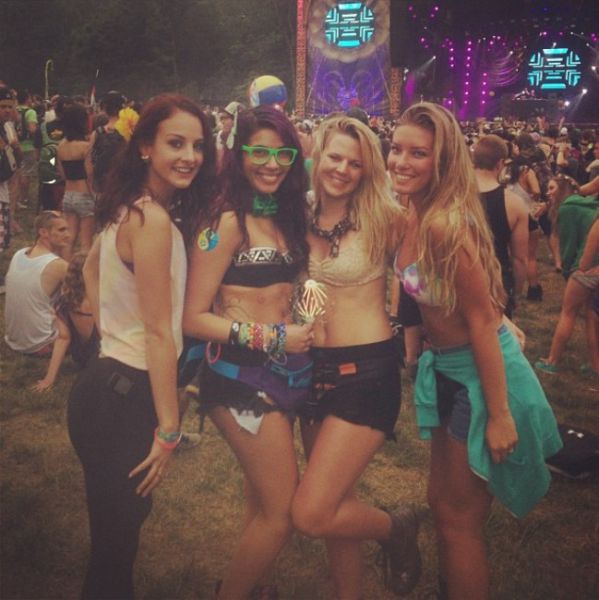|
|
Rave Music Fan Girl
|
Grave Rave, on 11 October 1992 marked the first major party crack down in the mid-west, when 973 people were arrested for attending a party at a warehouse in Milwaukee's Third Ward. Following the crackdown, most raves were promoted via fliers and distributed a phone number with an informational voice message. On the day of the party, the message changed to give the location of the map point. Upon showing up at the map point, ravers were able to purchase a map and ticket to the party. Midwest parties were commonly held at barns, camp grounds, and warehouses. Detroit actually held Raves in abandoned businesses. Through the 1980s & 1990s, another common Detroit underground party was The Red Door. In 1995 the Detroit Police Department began sending the gang squad in to raid parties.
No longer considering itself as a "rave" scene, unless using the term "rave" in a sarcastic yet nostalgic way, Detroit has a very committed fan base for all-night Techno events, better known as "parties." Detroit is known for Techno music, as demonstrated in the opening of the club The Motor Lounge (later -The Motor) of Hamtramck (Detroit) in 1996. This allowed DJs to play at a legitimate place rather than underground Raves. The history of Techno music's origins and connotations still linger in Detroit and continue to inspire die-hard devotees who produce and progress the ideals of Techno and House gatherings in underground circumstances and production teams which are unique to Detroit. The Detroit Electronic Music Festival (DEMF) is an opportunity for visiting Techno tourists to experience the vibe of Detroit "parties," but the Detroit "party" scene continues year round for the locals who have, in many cases, been raised in the spirit and tradition of the Detroit Techno scene, usually for ten years or more.
• Canada
Rave culture in Canada reached its peak in the 1990s and early 2000s. Scenes were established within the major Canadian cities, but most notably Montreal, Toronto, and Vancouver and Edmonton. While the Toronto rave scene subsided about 2003, Montreal has thrived. Toronto during the late 1990s was home to the largest raves in Canada with attendance of 20,000. The shrinking of the Toronto rave scene was due to the actions of various Ontario based politicians and media. The Ontario Rave Act and City TV was especially influential on the scene. By creating a scare to the venue owners, it was difficult if not impossible for promoters to establish locations to house the events, and insurance companies would create a trade barrier by preventing the execution of a certificate thus preventing the event from occurring. Requirements were also created for an arbitrary amount of paid duty police constables to be on-site at events, thus greatly raising the expenses to the promoter. Montreal regularly holds large scale events with the biggest international headliners. Bal en Blanc being one of the best known single night parties in Canada. Toronto is now more known for its shift to the Club/Drum 'n' Bass scene. The Hullabaloo production company held its final party on July 9, 2005. Outdoor raves are still a mainstay of the Vancouver scene. Edmonton continues to hold a following and is currently experiencing a small resurgence.
|
|









